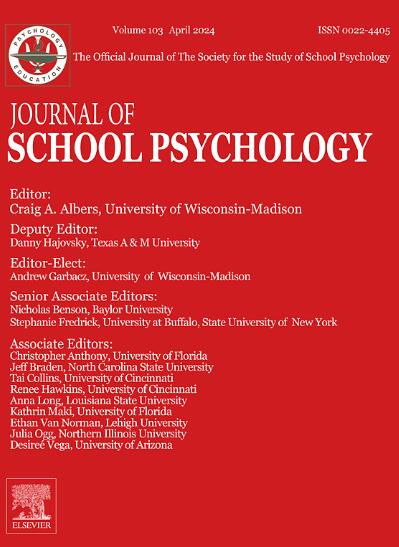Flexible distributional models for meta-analysis of reading fluency outcomes from single-case designs: An examination using Bayesian methods
IF 4.1
1区 心理学
Q1 PSYCHOLOGY, SOCIAL
引用次数: 0
Abstract
There is growing interest in statistical modeling of data from single-case design (SCD) research. However, currently available methods such as hierarchical linear models and generalized linear mixed models have assumptions that may limit their utility for applied SCDs, such as those that use curriculum-based measures of academic performance as outcomes. In the present paper, we demonstrate use of a flexible class of distributional models, known as generalized additive models for location, scale, and shape (GAMLSS), to evaluate different distributional families and modeling specifications for reading curriculum-based measures of reading fluency data drawn from SCD studies of academic interventions. Using Bayesian methods and graphical posterior predictive checks, we evaluated GAMLSS based on normal (Gaussian), Poisson, and negative binomial distributional families. We also evaluated the extent to which the dispersion, or variability of outcomes, itself varied across studies and across participants within studies. We found that negative binomial models with heterogeneous dispersions fit better than other distributional families and closely reproduced features of the observed data. Findings highlight the need to consider a broader set of distributional families when developing meta-analytic models of SCD data as well as the need to consider how the degree of dispersion may vary from study to study. We discuss implications for future methodological research and for meta-analysis of SCDs.
单一案例设计阅读流畅性结果荟萃分析的灵活分布模型:使用贝叶斯方法的检验
对单例设计(SCD)研究数据的统计建模越来越感兴趣。然而,目前可用的方法,如层次线性模型和广义线性混合模型,都有一些假设,可能会限制它们在应用scd中的效用,比如那些使用基于课程的学习成绩衡量作为结果的方法。在本文中,我们展示了使用一种灵活的分布模型,称为广义的位置、规模和形状加性模型(GAMLSS),来评估基于阅读课程的阅读流畅性数据测量的不同分布家族和建模规范,这些数据来自学术干预的SCD研究。使用贝叶斯方法和图形后验预测检查,我们评估了基于正态(高斯)、泊松和负二项分布家族的GAMLSS。我们还评估了结果的离散度或可变性在不同研究之间以及研究中不同参与者之间的变化程度。我们发现具有非均匀分散的负二项模型比其他分布家族更适合,并且更接近地再现了观测数据的特征。研究结果强调,在开发SCD数据的元分析模型时,需要考虑更广泛的分布家族,以及需要考虑不同研究之间的分散程度如何变化。我们讨论了scd对未来方法学研究和荟萃分析的影响。
本文章由计算机程序翻译,如有差异,请以英文原文为准。
求助全文
约1分钟内获得全文
求助全文
来源期刊

Journal of School Psychology
PSYCHOLOGY, EDUCATIONAL-
CiteScore
6.70
自引率
8.00%
发文量
71
期刊介绍:
The Journal of School Psychology publishes original empirical articles and critical reviews of the literature on research and practices relevant to psychological and behavioral processes in school settings. JSP presents research on intervention mechanisms and approaches; schooling effects on the development of social, cognitive, mental-health, and achievement-related outcomes; assessment; and consultation. Submissions from a variety of disciplines are encouraged. All manuscripts are read by the Editor and one or more editorial consultants with the intent of providing appropriate and constructive written reviews.
 求助内容:
求助内容: 应助结果提醒方式:
应助结果提醒方式:


